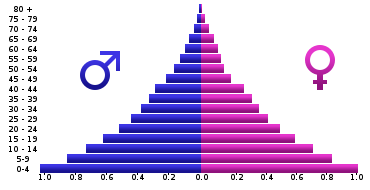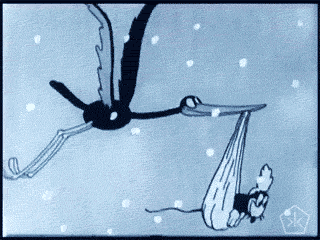Another google problem
 Imagine you are in a world where all the parents want to have a boy, and every parent keeps having a children until they have a boy, then they stop giving birth.
If the number of male population in this world is given by
p
, and the number of female population is given by
q
. What is the value of
q
p
.
Imagine you are in a world where all the parents want to have a boy, and every parent keeps having a children until they have a boy, then they stop giving birth.
If the number of male population in this world is given by
p
, and the number of female population is given by
q
. What is the value of
q
p
.
Continuation of previous question ,
The answer is 1.
This section requires Javascript.
You are seeing this because something didn't load right. We suggest you, (a) try
refreshing the page, (b) enabling javascript if it is disabled on your browser and,
finally, (c)
loading the
non-javascript version of this page
. We're sorry about the hassle.
7 solutions
@Mayank Holmes , man, this question could have been put up in another way, lyk if the parents want girls, so the answer must remain the same. There are only two cases, either they wish for a boy or a girl, and since the probabilities for both are same, therefore no. of girls = boys . Therefore p/q=1
haha I just thought "Well for every and girl there must have been a boy and girl pair, so I guess as it goes off to infinity only the couples would matter."
Ignoring the circumstances, each time a couple is going to have a child, the probability that the child is a boy is 2 1 So having a child n times, the expected number of boys is 2 n and the expected ratio is 1 : 1
Notice that the probability of having a boy is independent of whether the previous child is a boy or not.
What this problem is asking is, "If you want to flip a coin until you get heads and you repeat the experiment for a long time, what's the head to tails ratio?" Just because you're ending the experiment when you see heads doesn't mean the probability of heads has changed.
Python 3.4:
1 2 3 4 5 6 7 8 9 10 11 12 13 14 15 16 17 18 19 20 21 22 23 |
|

Thumbs up for cool GIF!!
You should ask for "expected" value of p/q...
As opposed to the unexpected value of q p ?
Using probability,where probability of getting girl and boy is equal
P ( G e t t i n g G i r l s ) P ( G e t t i n g B o y s ) = P ( G ) + P ( G G ) + P ( G G G ) + . . . P ( B ) + P ( G B ) + P ( G G B ) + . . . = 0 . 5 + 0 . 5 2 + 0 . 5 3 + . . . 0 . 5 + 0 . 5 2 + 0 . 5 3 + . . . = 1
the\quad probabilities\quad for\quad both\quad boy\quad and\quad girl\quad are\quad the\quad same....hence\quad the\quad answer\quad 1
how to use latex
Log in to reply
close the latex in \ ( \ ) , that should help
Log in to reply
Don't use latex for normal text, it is clear in its own way
each couple will have 1 son. mean boys per couple =1.
probability of of having 0 girls = 1/2(0.5 chance that first is boy).
probability of having 1 girl = 1/4 (0.5 first is girl *0.5 second is boy).
and so on.
mean girls per couple= s u m i = 1 i n f i n i t y i/ 2 i + 1 =1.
thus boys/girls =1